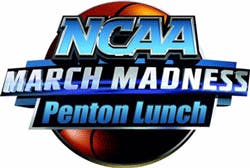Are You Using March Madness to Boost Worker Morale and Engagement?
It seems that part of the March Madness tradition now is quantifying the productivity hit that employers take when workers are in the throes of the NCAA men’s basketball tournament.
In its annual analysis, the outplacement firm Challenger, Gray & Christmas Inc. estimates that companies could lose at least $1.2 billion for every for every hour that workers spend watching the first week of the NCAA tournament. The firm estimates that 50 million Americans will participate in March Madness office pools – and that’s based on a 2009 Microsoft survey. More recent surveys suggest that March Madness could distract more than 100 million workers.
The bottom line: March Madness is “particularly hazardous to workplace productivity,” says the firm’s CEO, John Challenger. It might not ding the nation’s quarterly GDP, he says, but “you can be assured that department managers and network administrators notice the effect on work output and companywide Internet speeds.”
He adds that [lucky] workers in the Pacific time zone, who can get their March Madness fix starting at 9 a.m., “can spend the entire workday streaming games on their computer or mobile device.” And that’s a bad thing?
I’m kidding, of course. When it comes to safety, distractions can be deadly. And I realize that there are many work settings – the plant floor, for example – where workers aren’t allowed to use mobile devices during their shifts, and rightfully so.
Still, Challenger says employers shouldn’t necessarily crack down on March Madness, lest they risk “long-term damage to employee morale, loyalty and engagement.” If a clampdown on office pools and online streaming pushes good employees away or causes them to become disengaged, it could hurt productivity – which is what we were trying to avoid in the first place.
“Instead, employers may want to seek ways to use March Madness as a tool to increase employee engagement,” Challenger explains.
An Opportunity to Build the Safety Brand
Promoting free companywide office pools and allowing workers to wear T-shirts and sweatshirts in support of their favorite teams are among the ways that employers could leverage March Madness to boost camaraderie and morale, he says. He also suggests trying to stave off last-minute call-offs by serving a catered lunch on the first two days of the tournament. I think that makes a lot of sense.
I think this represents an opportunity for the safety department to engage the workforce. How about “sponsoring” a March Madness lunch, giving workers a chance to socialize with safety leaders and other team members while watching hoops? Likewise, the safety department could take the lead in making sure that there are TVs showing March Madness in breakrooms or common areas, perhaps even serving snacks and soft drinks.
As Terry Mathis explained in the March issue of EHS Today, “forward-thinking organizations are branding their safety initiatives,” just as marketing professionals try to brand products and services to maximize their value. Maybe March Madness is just the ticket to help build safety’s brand awareness and identity in your organization.
About the Author
Josh Cable Blogger
Senior Editor
Josh Cable is senior editor of EHS Today, a Penton publication. In his nearly 15 years as a journalist, he has covered a wide range of topics, including banking and finance, occupational safety and health, government purchasing and U.S. manufacturing. As a former editorial-staff member of Penton’s IndustryWeek and Occupational Hazards, he has toured dozens of manufacturing facilities, establishing himself as a subject-matter expert in world-class production, quality and safety systems.

